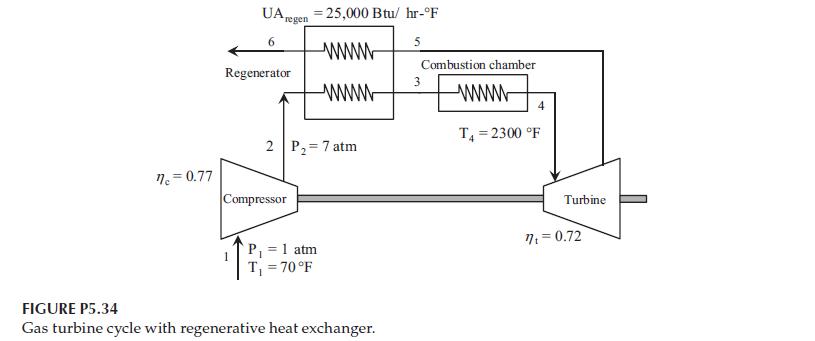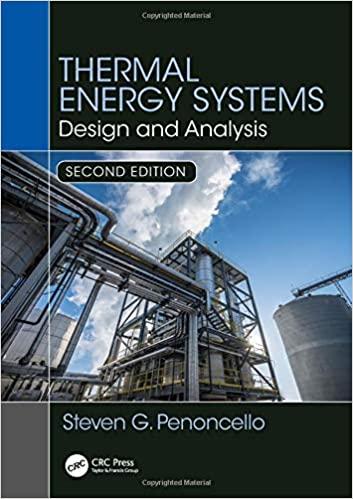A gas turbine cycle utilizes a regenerative heat exchanger as shown in Figure P5.34. Air enters the
Question:
A gas turbine cycle utilizes a regenerative heat exchanger as shown in Figure P5.34.
Air enters the compressor at atmospheric conditions, 1 atm and 70°F with a mass flow rate of 15,000 lbm/hr. The exhaust pressure of the compressor is 7 atm. The compressor is operating with an isentropic efficiency of 77%. The regenerator preheats the air entering the combustion chamber, thus reducing the fuel requirement and increasing the thermal efficiency of the cycle. The regenerator in the cycle has a UA product of 25,000 Btu/hr-°F. Combustion gases (which can be modeled as dry air, M = 28.965 lbm/lbmol) leave the combustion chamber at 2300°F. The combustion gases then pass through the turbine which has an isentropic efficiency of 72%.
Assume that the pressure drops in all heat exchangers and connecting piping are negligible. Use the ideal gas law to model the properties of air. Even though the temperature varies significantly in this cycle, the average heat capacity evaluated between the highest and lowest temperatures in the cycle (cp,avg = 0.26856 Btu/lbm-R)
can be used for analysis of the components. Determine the following:
a. The net power delivered by the cycle (hp)
b. The heat transfer rate required at the combustion chamber
c. The thermal efficiency of the cycle
d. Investigate the effect of the size of the regenerator by plotting the thermal efficiency of the cycle as a function of the regenerator UA value for the range 0 Btu/
hr-°F ≤ UA ≤ 50,000 Btu/hr-°F. What is the significance of UA = 0 Btu/hr-°F?
Step by Step Answer:

Thermal Energy Systems Design And Analysis
ISBN: 9781138735897
2nd Edition
Authors: Steven G. Penoncello





